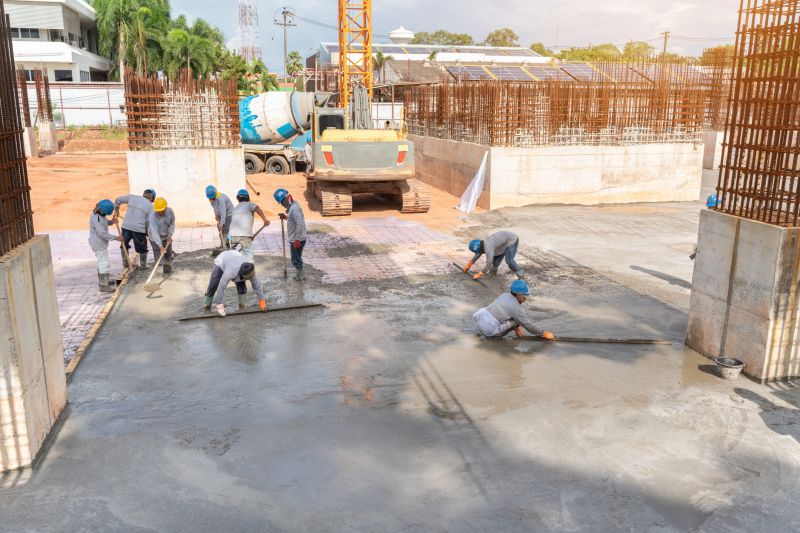Ultimate Guide to Concrete Repair Products for a Stronger Surface
Learn about the essential products that help restore and reinforce concrete surfaces efficiently and effectively.
 Concrete repair products are essential for maintaining the integrity and appearance of concrete surfaces in residential, commercial, and industrial settings. Whether addressing small cracks, surface spalling, or more extensive damage, there are a variety of solutions designed to suit different repair needs. Selecting the right product depends on factors such as the type and extent of damage, the location of the repair, and the desired finish. Proper preparation and application are key to achieving durable results, making it important to understand the features and limitations of each product type.
Concrete repair products are essential for maintaining the integrity and appearance of concrete surfaces in residential, commercial, and industrial settings. Whether addressing small cracks, surface spalling, or more extensive damage, there are a variety of solutions designed to suit different repair needs. Selecting the right product depends on factors such as the type and extent of damage, the location of the repair, and the desired finish. Proper preparation and application are key to achieving durable results, making it important to understand the features and limitations of each product type.
Top Overall Option
Multi-Purpose Concrete Repair Compound
A versatile repair compound designed for filling cracks, patching spalls, and restoring surface integrity across various concrete surfaces. It offers good adhesion, durability, and ease of use, making it suitable for both DIY enthusiasts and professionals. Its compatibility with different concrete types and quick curing time contribute to its widespread utility in concrete repair projects.
Types of Products For Concrete Repairs
Concrete Crack Filler
Products formulated to fill and seal small to medium cracks, preventing water ingress and further deterioration.
Patch and Repair Mortar
Thick mixtures used to fill larger holes and spalls, restoring surface strength and appearance.
Epoxy Injection Kits
High-strength epoxy resins designed for structural repairs and crack sealing in load-bearing concrete.
Polyurethane Foam Sealants
Flexible sealants ideal for sealing moving cracks and joints, offering waterproofing capabilities.
Surface Sealers and Coatings
Protective layers that seal the surface against moisture, chemicals, and wear after repairs.
Self-Leveling Underlayments
Flowable products used to create smooth, level surfaces before finishing or further repairs.
Hydraulic Cement
Rapid-setting cement used to stop active leaks and repair cracks exposed to moisture.
Fiber-Reinforced Repair Mixes
Concrete mixes enhanced with fibers for added strength and crack resistance in repairs.
Chemical Hardening Agents
Products that penetrate and harden the surface to improve durability and resistance.
Bonding Agents
Adhesives used to improve the bond between old and new concrete during repairs.
Popular Choices
Widely used for sealing small cracks and preventing water infiltration, suitable for various concrete surfaces.
A commonly selected patching compound for filling holes and surface imperfections in concrete.
Popular for structural crack repairs, offering strong adhesion and durability.
Frequently chosen to protect repaired surfaces from moisture and chemical damage.
Ideal for sealing expansion joints and cracks that experience movement.
Popular for emergency repairs and stopping active leaks in concrete structures.
Chosen for its flexibility and waterproofing qualities in sealing cracks.
Commonly used for patching spalls and restoring surface texture.
Popular for renewing worn or damaged surfaces with a new layer of finish.
Chosen for added strength in patching larger areas or structural repairs.
For minor surface cracks and superficial damage, patching compounds and repair mortars can provide effective solutions that blend seamlessly with existing concrete. These products are typically easy to apply and cure quickly, making them suitable for DIY projects or quick fixes. For larger cracks or structural repairs, epoxy injections and high-strength repair mortars offer more robust solutions, capable of restoring load-bearing capacity and preventing further deterioration.
In addition to patching and structural repair products, surface sealers and coatings play a vital role in protecting repaired areas from moisture, chemicals, and environmental wear. These treatments can extend the lifespan of the repair and improve the overall appearance of the concrete surface. When choosing repair products, it is also important to consider compatibility with existing concrete, ease of application, curing time, and the level of finish required. Proper surface preparation, including cleaning and roughening the area, is crucial to ensure optimal adhesion and performance of the repair materials.
Key Buying Considerations
- Identify the extent and type of damage to select the appropriate repair product.
- Consider whether the repair is structural or superficial to choose the right strength and formulation.
- Check compatibility of the product with existing concrete surfaces to ensure proper adhesion.
- Evaluate curing time requirements to fit project timelines and application conditions.
- Determine the level of finish required, such as textured or smooth surface, and select products accordingly.
- Assess environmental conditions like moisture exposure or chemical contact that may influence product choice.
- Review ease of application, especially if DIY installation is intended, to ensure proper handling.
- Look for products with good adhesion properties to prevent future delamination or cracking.
- Consider the need for flexibility in sealants or fillers if the concrete surface experiences movement.
- Examine the durability and resistance features, such as water, chemical, or freeze-thaw resistance.
- Ensure proper surface preparation instructions are followed for optimal results.
- Check for compatibility with other repair materials used in the project.
- Review manufacturer instructions regarding mixing, application, and curing procedures.
- Consider long-term maintenance needs and whether the product offers easy reapplication or touch-up options.
- Be mindful of environmental and safety considerations during application, including ventilation and protective gear.
